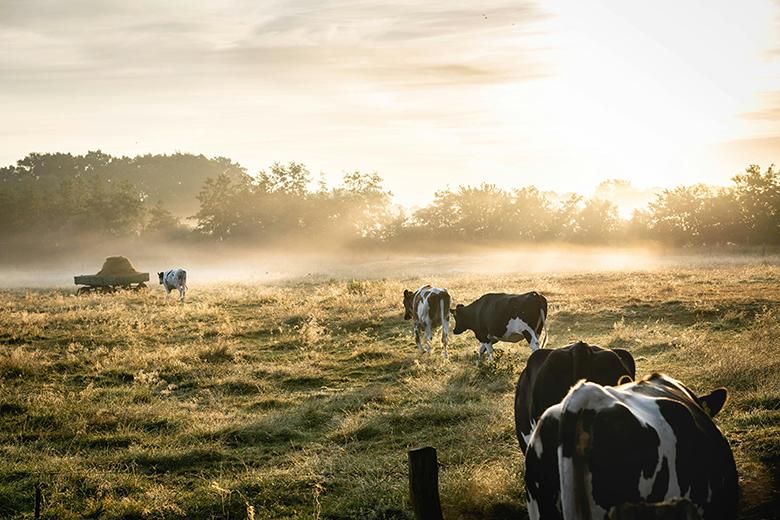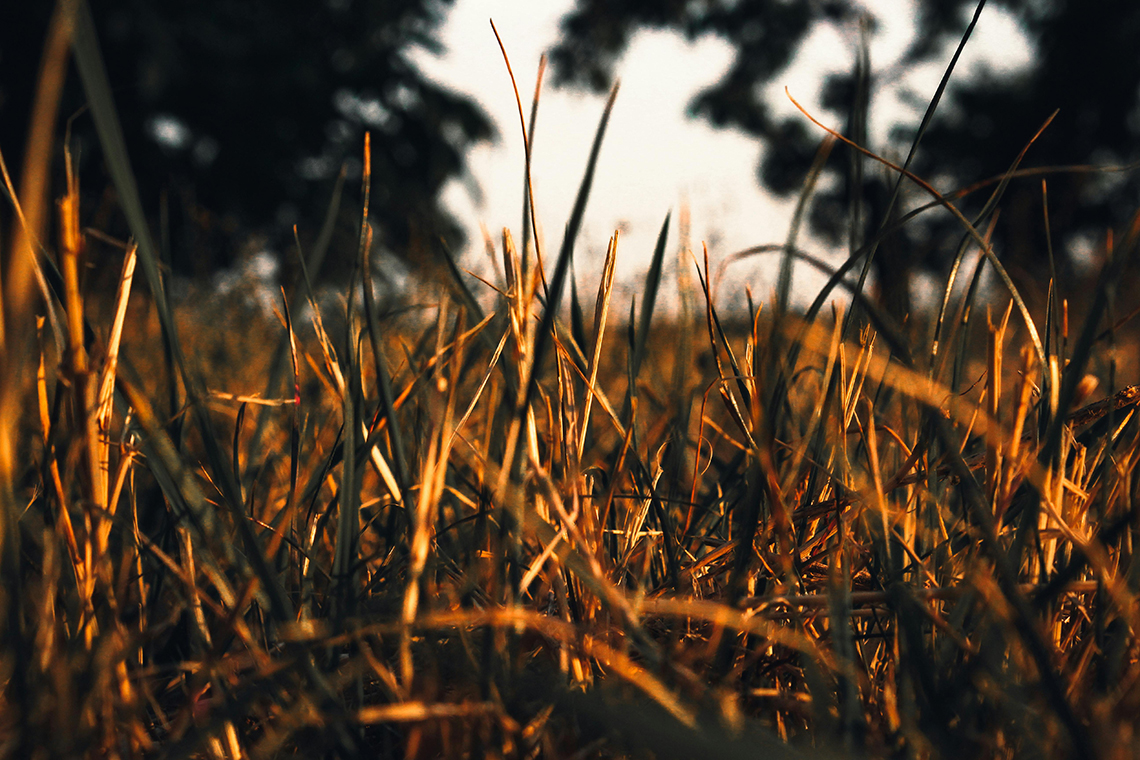
A quick glance outside reveals that Appalachian Ohio is historically dry. Lawns are brown and barren, a shocking number of trees are dawning their fall foliage and dropping their leaves more than a month ahead of schedule and many local farmers are struggling to tend to their stunted, dried out crops.
The Appalachian mixed mesophytic forests and farmlands of southeast Ohio are typically wet and lush well into late summer and fall. Southeast Ohio is not typically an area that experiences drought, but this year the region is in a drought so severe the United States Department of Agriculture (USDA) Farm Service Agency (FSA) is offering resources to help farmers recover.
This drought is unique for several reasons according to Dr. Jared DeForest, a professor of ecosystem ecology in OHIO’s College of Arts and Sciences. Firstly, droughts of this magnitude don’t happen in southeast Ohio.
“We’re in an area that doesn’t get drought,” said DeForest. “That's the thing with climate change, areas that typically don't get droughts are going to get droughts, and so we've got a problem of places that typically are wet, are now experiencing droughts that they don't normally get.”

The drought is also quite localized—the impact is limited to southeast Ohio and some surrounding areas. Due to southeast Ohio’s relatively small population compared to the rest of the state, the drought’s impact and associated media coverage has been largely confined to the region itself. Other sections of Ohio have experienced a lack of rain this year but nothing this severe.
“You're not going to find this in Columbus,” said DeForest. “The drought is in southeast Ohio or northwest West Virginia, and a little bit into Kentucky. So, you can see it's very localized in the United States.”
Because of the drought, many well-established trees in the forests of Appalachian Ohio are dying or prematurely going into dormancy. The trees that are shedding their leaves and going dormant early are actually utilizing a survival mechanism.
“These trees can live 450 years,” DeForest explained. “They don’t have to reproduce. They don’t have to grow. They’re all about survival, but that’s what makes this unique, I’m personally seeing—anecdotally—mature trees that are dying. The best-case scenario—if these forests are resilient—they’re just going to grow less this year and be fine.”
Ohio University Environmental and Plant Biology Professor Dr. Rebecca Snell says that the biodiversity of the region also makes this drought unique but important species could be threatened if it were to continue.
“We actually have one the highest regions of biodiversity in temperate forests. We have species here that, typically, you find much further north and we also have species that you would find as you go further south and they kind of mix here,” Snell said. “I’d be scared [if a drought were to continue]. I think with one year [of drought] we’ll see recovery. I’d be terrified if we have a multiple-year drought.”
Southeast Ohio agriculture has also dried up due to the drought. Crops like corn, hay and soybeans have withered and yields are small or unusable. Even the grass used to graze livestock is scarce. As a result, livestock farmers that rely on grass to feed their animals have used their winter supply of hay earlier than anticipated. These farmers have had to prematurely sell their animals or will not be buying any to raise this year. Many are left wondering what they will do for income next year to cover operating expenses.

Morgan County farmer Steve Best has seen the impact of the drought firsthand and says there is a desperation in the southeast Ohio farming community. Best is a beef cattle farmer whose family has been operating Best Family Farms LLC for more than 150 years. Since he has no grass, Best said he will not be buying calves to raise this year. Without his own cattle, he began selling hay to those who still had livestock, but he quickly sold out.
“This is by far one of the worst droughts we’ve ever experienced,” Best said. “My heart just goes out to the ones who are desperately looking for hay. I had some old, old bales of hay that weren't good enough to really feed to a cow. I had a lady just begging me to sell her that hay that I was just going to use for mulch, and I told her ‘I can't do that.’”
Best went on to say that if he sold the unusable hay to the woman, her cow would’ve essentially starved to death with a full belly because it would’ve been indigestible.
USDA designated 22 Ohio counties as natural disaster areas on Sept. 4, 2024, and as of that date those counties had experienced eight or more consecutive weeks of drought. The natural disaster designation allows the USDA FSA to “extend much-needed emergency credit to farm operators in primary and contiguous counties through FSA emergency loan assistance.” Those eligible for assistance have until April 28, 2025, to apply.
“These loans help producers who suffer qualifying farm related losses directly caused by the disaster in a county declared or designated as a primary disaster or quarantine area. Also, farmers located in counties that are contiguous to the declared, designated, or quarantined area may qualify for Emergency loans,” according to the FSA website.
Primary impacted Ohio counties include Athens, Belmont, Fairfield, Fayette, Gallia, Guernsey, Harrison, Highland, Hocking, Jackson, Jefferson, Madison, Monroe, Morgan, Muskingum, Noble, Perry, Pickaway, Pike, Ross, Vinton and Washington. According to the U.S. Drought Monitor, these counties suffered from a drought intensity value during the growing season of: D2 Drought—severe for eight or more consecutive weeks, D3 Drought—extreme or D4 Drought—exceptional.
Contiguous Ohio counties include Adams, Brown, Carroll, Champaign, Clark, Clinton, Columbiana, Coshocton, Franklin, Greene, Lawrence, Licking, Meigs, Scioto, Tuscarawas and Union.
Contiguous West Virginia counties also eligible include Brooke, Cabell, Hancock, Marshall, Mason, Ohio, Pleasants, Tyler, Wetzel and Wood.
Best said the assistance offered by USDA is critical for southeast Ohio farmers.
“One producer that's going to buy quite a bit of hay from us is waiting for those payments to come through. He's relying on that government payment,” Best explained. “[Farmers are] utilizing those funds to try and stay afloat and get through this.”
To learn more about the natural disaster designation or to apply for assistance, please visit: https://www.fsa.usda.gov/state-offices/Ohio/news-releases/2024/twenty-two-ohio-counties-declared-a-primary-natural-disaster-area-due-to-drought-additional-ohio-and-west-virginia-counties-are-eligible-as-contiguous-counties-.




